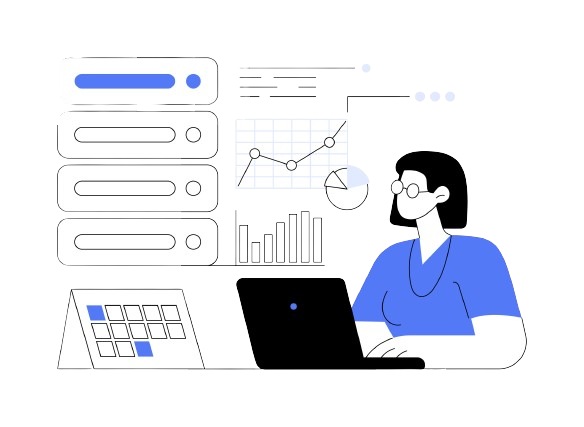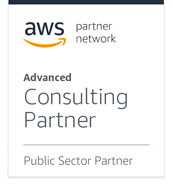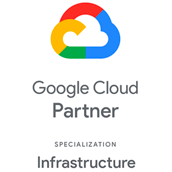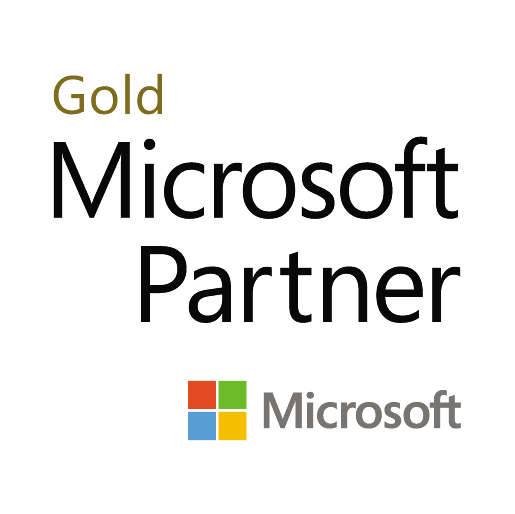Application Modernization
Application modernization involves upgrading and transforming legacy applications to leverage modern technologies, architectures, and methodologies, enabling organizations to enhance agility, scalability, and user experience while reducing technical debt and operational costs. Our application modernization solutions encompass a comprehensive approach to analyze, refactor, re-architect, and migrate legacy applications to cloud-native environments, containerized platforms, or microservices architectures.
Modernize my applications
1. BENEFITS
How Can I Benefit?
Application modernization offers a multitude of benefits that empower organizations to thrive in today's rapidly evolving digital landscape. By upgrading and transforming legacy applications to leverage modern technologies, architectures, and methodologies, businesses can enhance their agility, scalability, and competitiveness. One of the primary advantages of application modernization is improved operational efficiency, achieved through the optimization of business processes, automation of manual tasks, and streamlining of workflows. Modernized applications also foster enhanced user experiences, catering to evolving customer expectations and driving higher levels of engagement and satisfaction. Furthermore, application modernization enables organizations to reduce technical debt and operational costs by eliminating outdated technologies, minimizing maintenance efforts, and improving resource utilization. Additionally, modernized applications are more adaptable to changing market dynamics and regulatory requirements, allowing businesses to stay ahead of the curve and respond swiftly to emerging opportunities and challenges. Overall, application modernization serves as a catalyst for innovation and growth, empowering organizations to harness the full potential of digital transformation and achieve sustainable success in today's dynamic business environment.
Data Modernization and Analytics
Modernize data management and analytics capabilities of legacy applications to leverage data as a strategic asset. Our data modernization and analytics services migrate data to modern data platforms (e.g., data lakes, data warehouses, NoSQL databases), implement data governance and quality frameworks, and develop advanced analytics and machine learning solutions to derive actionable insights and drive informed decision-making.
Containerization and Microservices Adoption
Embrace containerization and microservices architectures to modernize monolithic applications and improve agility, scalability, and resilience. Our containerization and microservices adoption services refactor legacy applications into loosely coupled, independently deployable microservices, containerize them using platforms like Docker and Kubernetes, and establish container orchestration and management frameworks to streamline application modernization and deployment.
API-Driven Modernization
Implement API-driven modernization strategies to enhance interoperability, flexibility, and extensibility of legacy applications. Our API-driven modernization services design, develop, and expose APIs to enable seamless integration with modern applications, platforms, and ecosystems, facilitating data exchange, functionality reuse, and innovation while preserving existing investments in legacy systems.
2. ASSESSMENT
Legacy Application Assessment
Before embarking on any modernization journey, it's crucial to understand the current state of your legacy applications. Our Legacy Application Assessment services provide a comprehensive evaluation of your existing applications, delving into their architecture, technology stack, dependencies, and performance. Through this thorough analysis, we uncover challenges, limitations, and potential opportunities for modernization. With insights gained from the assessment, we develop a tailored modernization strategy aligned with your business goals and requirements, ensuring a smooth and successful transition to modernized solutions.
Request Assessment quoteTechnical Debt Analysis
Dive into the technical debt accumulated by legacy applications through years of development and maintenance. Our technical debt analysis examines code quality, architectural complexity, outdated technologies, and accumulated workarounds or patches. By identifying areas of technical debt, we pave the way for informed decision-making and effective modernization strategies that address underlying issues and promote long-term sustainability.
Business Impact Assessment
Evaluate the business impact of legacy applications to prioritize modernization efforts based on strategic objectives and ROI. Our business impact assessment analyzes factors such as application functionality, user experience, scalability, and alignment with business goals. By understanding the impact of legacy applications on business operations, revenue generation, and customer satisfaction, we help organizations prioritize modernization initiatives that deliver the most significant value and competitive advantage.
Modernization Roadmap Development
Develop a clear and actionable modernization roadmap based on the findings of the legacy application assessment. Our modernization roadmap development services outline a phased approach to modernization, identifying key milestones, dependencies, resource requirements, and timelines. By providing a structured plan for modernization initiatives, organizations can effectively allocate resources, manage risks, and track progress towards achieving their modernization goals.
3. THE APPROACH
Methodology
Takumi Staff utilize the Twelve-Factor App methodology which provides a comprehensive guide for building modern, scalable, and maintainable web applications. By following these principles, developers can ensure their applications are designed to be robust, portable, and easy to manage across various environments.
Codebase
Takumi ensures organizations maintain a unified codebase for each application in version control, facilitating collaboration and providing a clear history of changes.
Dependencies
Takumi helps organizations manage dependencies effectively, ensuring consistent and reproducible builds across different environments.
Config
Takumi guides organizations in storing configuration settings outside the codebase, enabling easy configuration changes without code modifications.
Backing services
Takumi assists organizations in treating external services as attached resources, allowing for easy scaling and management.
Build, release, run
Takumi implements automated pipelines for organizations to handle the build, release, and run stages independently, ensuring reliability and consistency in deployments.
Processes
Takumi advises organizations on designing applications to run as stateless processes, enabling horizontal scaling and fault tolerance.
Port binding
Takumi helps organizations export services via port binding, simplifying deployment and ensuring consistency across different platforms.
Concurrency
Takumi supports organizations in scaling applications horizontally to handle increased load efficiently.
Disposability
Takumi encourages organizations to prioritize fast startup and graceful shutdown of applications, ensuring efficient resource utilization and minimal downtime.
Logs
Takumi helps organizations treat logs as event streams, enabling real-time monitoring and analysis to manage and troubleshoot application issues effectively.
Admin processes
Takumi guides organizations in running administrative tasks separately from the main application code, ensuring scalability and maintainability.
4. EXPERTISE
Special Sauce
Takumi's staff plays a pivotal role in enabling organizations to shift left by incorporating security practices right from the onset of the development process. By integrating security into every phase of the software development lifecycle, Takumi ensures that potential vulnerabilities are identified and addressed early, reducing the likelihood of security breaches down the line. One way we achieve this is by meticulously managing Role-Based Access Control (RBAC) permissions across codebases. This entails carefully defining and assigning roles to individuals within the development team, specifying who has access to various phase gates before a user can push code changes. Through granular control over permissions, we ensure that only authorized personnel can perform critical actions such as merging code, deploying to production environments, or accessing sensitive data. This proactive approach to security not only mitigates risks but also instills a culture of security consciousness within organizations, fostering a safer and more resilient software ecosystem.
Request your quoteDisposability, Environment parity, Logs
Takumi adopts a holistic approach to optimize application performance, leveraging a range of solutions from in-memory caching to event-driven architectures. By implementing in-memory caches such as Redis or Memcached, we accelerate data retrieval, reduce latency, and enhance overall application responsiveness. Additionally, we embrace event-driven architectures, where components communicate via asynchronous events, promoting scalability and decoupling while improving system resilience. Moreover, Takumi aids organizations in log aggregation to ensure no log event is lost, utilizing robust centralized logging solutions like ELK (Elasticsearch, Logstash, Kibana) or Splunk. This comprehensive approach enables efficient monitoring, troubleshooting, and analysis of application logs, enhancing visibility and facilitating proactive incident response. Furthermore, Takumi promotes environment parity through infrastructure as code (IaC) practices and automated deployment pipelines. By defining infrastructure configurations as code and deploying a single artifact consistently across all environments, we minimize discrepancies between development, staging, and production environments, fostering reliability and reproducibility in software deployments.
Dependencies, Configs, Backing Services, Builds
Takumi's approach to application configuration involves consuming runtime configurations rather than relying solely on build-time configurations, enabling dynamic shifting of deployments based on real-time factors such as workload distribution and resource availability. Takumi also employs static code analysis as a crucial component in assessing the security posture of software projects, determining the number of Common Vulnerabilities and Exposures (CVEs), and evaluating the associated risk to the organization. By leveraging sophisticated static code analysis tools, we systematically scan codebases for potential vulnerabilities, identifying security flaws and weaknesses early in the development process. This information is then shared with Security and Governance, Risk, and Compliance (GRC) teams to collaboratively determine the organization's risk appetite and prioritize remediation efforts. Additionally, we integrate automatic steps into the build process to prevent deployments to production environments deemed risky for the organization, based on predefined risk thresholds. In the event of a failed build, developers are promptly notified, allowing them to address issues promptly and resubmit their changes for deployment, ensuring a continuous and iterative improvement process towards a more secure software ecosystem.
Our partners
Google Cloud, Amazon AWS, Microsoft Azure, and Kubernetes trust us to implement their technologies in for our clients.



